Still catching up…
29th June 2017
This fish smokehouse is still in Subway St, though a little altered is readily recognisable. It and the premises on both sides of the entry were then the premises of G Hannath, now they have boards for Transfish Seafoods, Tudor Fisheries and J Laughton Fish Merchant.
The Hull ‘Local Listing’ notes it as “Distinctive and once commonplace Hull building type, now rare. One of only 9 surviving examples. Important reminder of Hull’s once great fishing and fish-processing industries and a significant contributor to local distinctiveness.”
Although the writer of that note obviously recognised their significance, the fact that only nine remain, and the condition of some of them are a reflection of a lack of general interest by the council over the years in Hull’s heritage. It is also interesting that the nine are only on the local list and not a single example is on the national list.
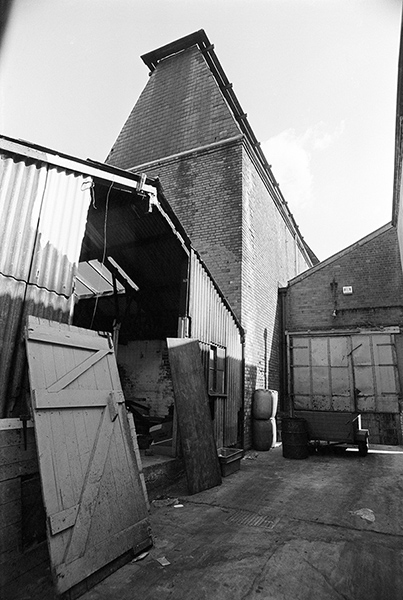
36c12: Smokehouse, Subway St, 1983 – Hessle Rd
30th June 2017
Much of the area between Hessle Rd and the docks had been flattened, leaving just a few of the older small factories, works and commercial premises but laying flat all of the working class housing. In its place came large and largely anonymous sheds such as this – which I am unable to positively identify. Almost certainly it will have altered considerably since 1983.
Clearly much of the housing was in poor condition, and some had been badly built in the first place, and the crowded area between the Hessle Rd and the docks needed dealing with, but I can’t help feeling it could have been done so much better than this wholesale mess.
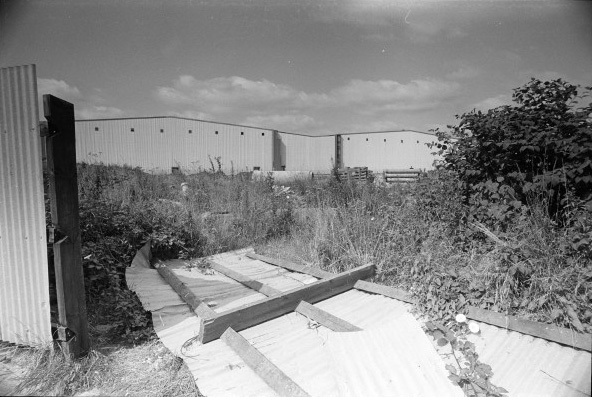
36c24: Redevelopment, off Hessle Rd, 1983 – Hessle Rd
1st July 2017
Rose Downs & Thompson (now De Smet Rosedowns Limited) specialized in the manufacture of oil-milling machinery, supplying one of Hull’s major industries. Founded in 1777 it is still in Cannon St, Hull but supplies presses around the world for the oilseed and rendering industries and is a part of the Desmet Ballestra Group. Founded as ‘Old Foundry’ by John Todd, its early products included cannons (some of which were in use at Waterloo) and parts for windmills and it also became a ship chandlery. According to Grace’s Guide the company installed its first hydraulic press for linseed by 1820.
Christiana Rose, a daughter of one of the original partners Duncan Campbell, inherited the company in 1840, employing 50 men at the works in Sculcoates. In 1859 she took on James Downs as her manager and the company began to specialise in oil seed crushing machinery. Downs was made a partner and the company became Rose and Downs in 1871, the year than Christiana Rose died. Her grandson John Campbell Thompson joined the company in 1874 and it became Rose, Downs and Thompson. The company was bought by the Power-Gas Corporation in 1951 and passed through several other hands before becoming De Smet Rosedowns.
The lorry gate and wall are still there on Bridlington Ave, a little south of the junction with Cannon St, but the building behind, with its gable with ‘R D & T LTD’ on it disappeared a few years ago – and that empty noticeboard along with its small grass area and tree at the edge of the car park went some time earlier.
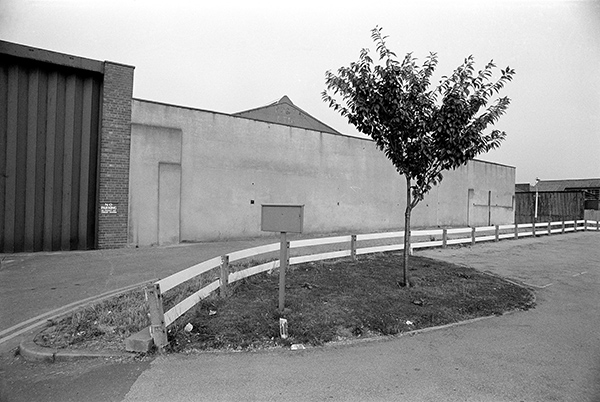
36c43: Rose Downs & Thompson, Bridlington Ave, 1983 – Beverley
2nd July 2017
The large building in the background on the other side of the River Hull is clearly still present on Wincolmlee, just to the north of the junction with Oxford St – and it has a similar pattern of three vertical slots – perhaps for ventilation – on the street side. A board on the wall on its left there is for Humber Fabrications (Hull) Ltd, who appear to be based in other sites on Wincolmlee and were founded some years after I took this picture.
Lime Street is quite close to the river here, and I think this picture was probably made from the road with my lens poking through the fence or through an open gate where Lime Street meets Eagle Terrace. Or I may have been able to wander a little closer. The site is now part of IBL Liquids.
The oil drums are all clearly labelled but even for those I can read offer no information of interest to me, though I can make out the word ‘OIL’ on the side of one of them. The vessel is clearly of some size, but unfortunately the name on its lifeboat is obcsured, though it appears to start ‘HAM’.
There is a large storage tank at left – still there – but that across the river has gone, along with what looks like pile of timber on a wharf opposite.
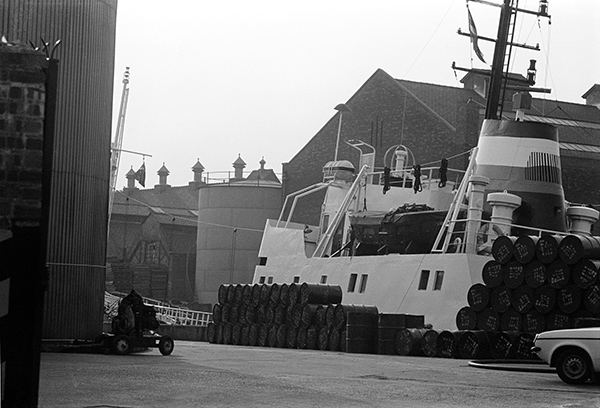
36c51: Ship and Oil Drums, Lime St, 1983 – River Hull
3rd July 2017
Google Streetview from July 2008 shows just a huge pile of bricks and rubble where the factory building on the right was when I took this picture, though the high brick wall with its peeling sign for H&L Vehicles – M.O.T Testing – Repairs – Welding – Services on the north side of Chapman St is still there, along with the metal fence and gates on New Cleveland St. The mill was demolished by a careful series of explosions in September 2007.
This was the Swan Flour Mills, Sculcoates Bridge, originally built in 1897 for Rishworth, Ingleby & Lofthouse Ltd and expanded the following year with the silo added in 1906, but almost entirely destroyed by wartime bombing in March 1941. In 1921 the company became part of Spillers. The mill was rebuilt after the war in a rather more plain style with a reinforced concrete silo beyond the brick building, which at 149 ft was one of Hull’s taller buildings. Beyond that the lower buildings are I think a part of the British Cocoa Mills (Hull) Ltd.
Lee Shore, a general cargo coaster of around 299 gross tons was built in 1954 by Büsumer Schiffswerft W. & E. Sielaff in Büsum in North Germany and went through a succession of owners and names: (1954) Labor Et Fides; (1964) Jutta Brey; (1980) Hubert; (1983) Delta Lady; before she became Lee Shore, owned by Corolan Maritme Ltd, registered in Gibraltar in 1983. A fire at Hull destroyed her wheelhouse in 1984 and in 1986 she became the NORDICA STAR and in 1990 her last name change to MILLSUPPLIER. After being abandoned when the engine room flooded in the North Sea in December 1990 she was towed to Lowestoft, and in 1994 was laid up in Rotterdam and presumably broken up.
The ship was 135 ft long and around 27 ft wide and fully loaded needed about 11 ft of water and was certainly one of the larger vessels I noted this far up the River Hull.
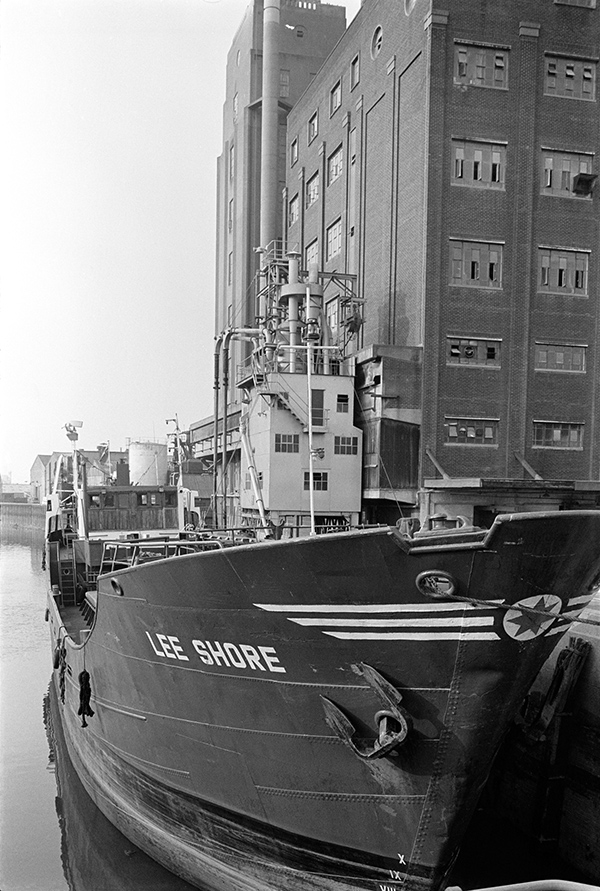
36c52: Lee Shore moored at Spillers mill, River Hull, 1983 – River Hull
4th July 2017
Most of this picture – the Lee Shore and the Spillers Mill at right is described in the previous post. I can see no name on the vessel at left, which appears to be a coaster of a similar size.
The low buildings are the extreme left are now the Hull Microfirms Centre on Wincolmlee, but the taller buildings where the ship is moored are at around 308 Wincolmlee have gone. I think these were a part of the Wincolmlee Oil & Cake Mill, on Wincolmlee just to the north of the Sculcoates Bridge works of John Hamilton & Co.
Hull was one of the largest centres of the oil crushing industry in the world, from around 1500 with linseed from Russia, but later with other crops including soya, cottonseed, rape, castor, palm kernels, ground nuts, sunflower seeds and more from Argentina, Egypt, India, Cyprus, the Caribbean and elsewhere, particularly across the British Empire.
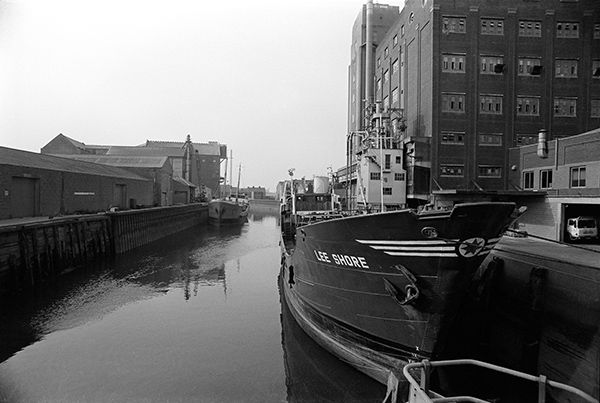
36c54: River Hull upstream from Sculcoates Bridge, 1983 – River Hull
5th July 2017
This selection of pipes and chimneys was on somewhere on Lime Street, running roughly parallel to the east of the River Hull, with wharves and factories supplied by the river between. Apart from the drainpipe, the pipes are well-lagged, suggesting they carried wither steam or liquids at high temperature. I was particularly interested in the shadow of the pipe, and its shadow within another shadow, which creates a slight spatial disjunction in the lower left quarter of the image.
Most of Hull’s early industries developed around the River Hull, based on whaling and on agricultural crops brought up-river, coming both from across the Humber and from across the North Sea.
I don’t think this building or the pipes remain, though I can recall exactly where it was, probably not far from the crossroads with Jenning St.
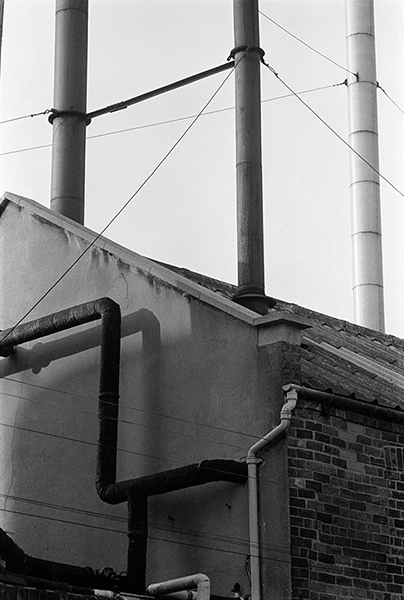
36c66: Pipes and chimneys, Lime St, 1983 – River Hull
You can see the new pictures added each day at Hull Photos, and I post them with the short comments above on Facebook.
Comments and corrections to captions are welcome here or on Facebook.
______________________________________________________
There are no adverts on this site and it receives no sponsorship, and I like to keep it that way. But it does take a considerable amount of my time and thought, and if you enjoy reading it, a small donation – perhaps the cost of a beer – would be appreciated.
My London Diary : Buildings of London : River Lea/Lee Valley : London’s Industrial Heritage
All photographs on this and my other sites, unless otherwise stated, are taken by and copyright of Peter Marshall, and are available for reproduction or can be bought as prints.